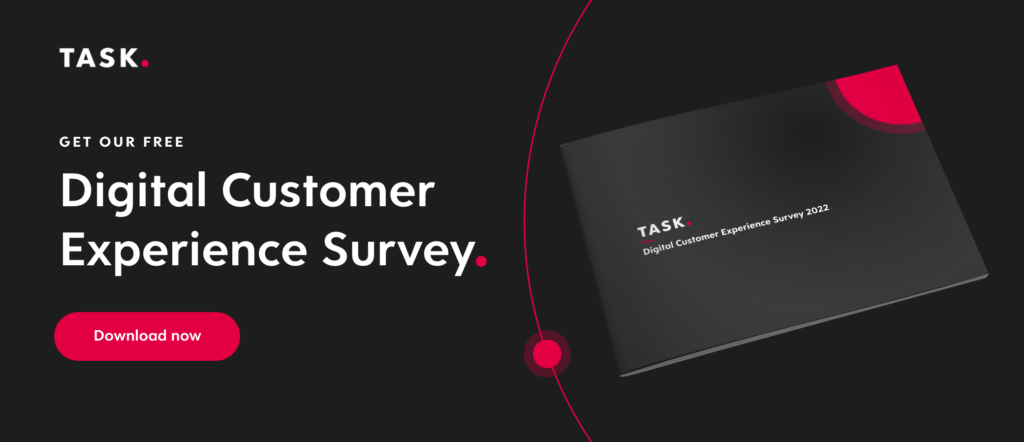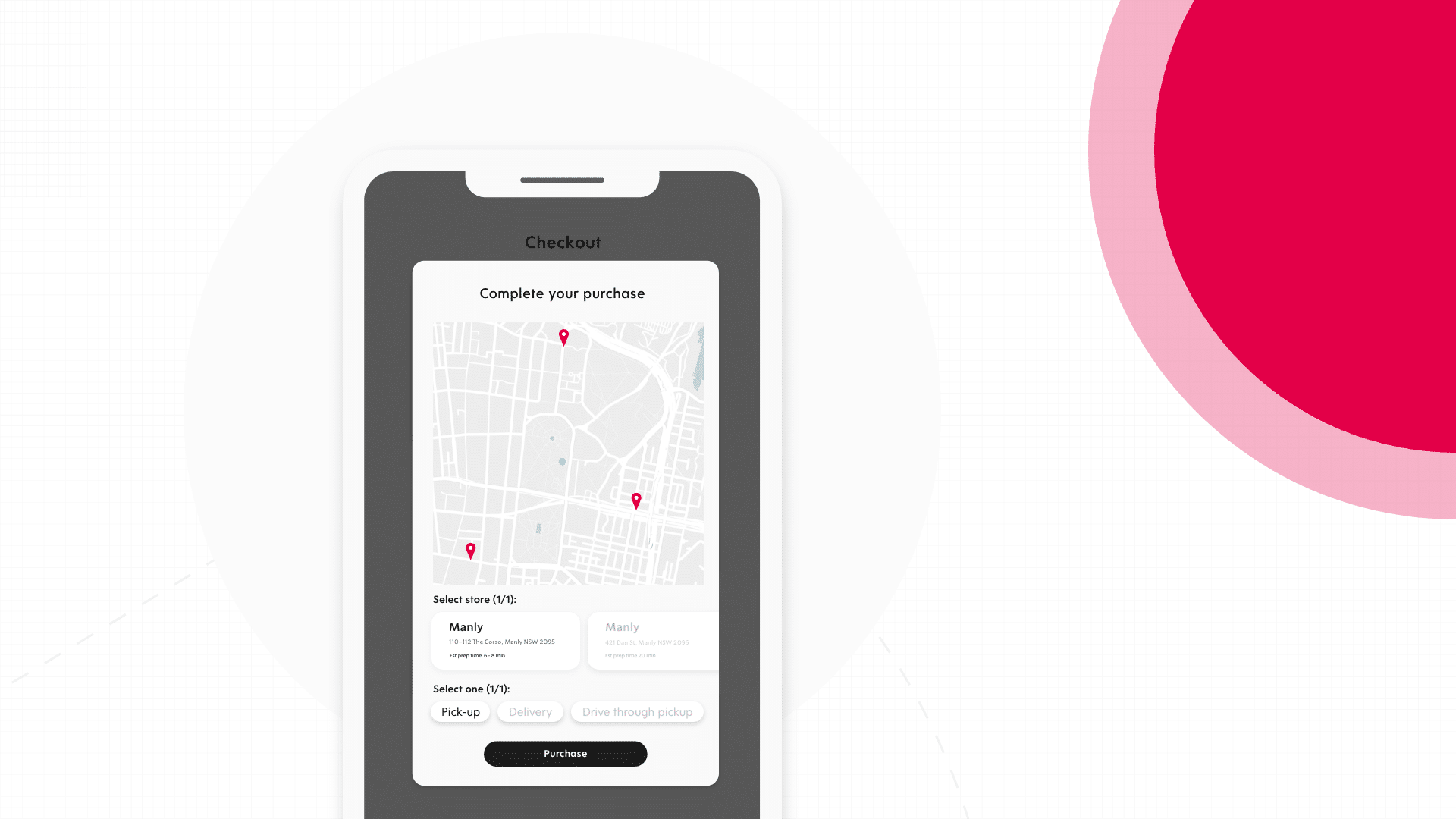From how your guests find your restaurant to how they order, pay, and interact with your brand is all performed and connected through technology. Get this piece wrong – whether it’s a glitch in your system or an ineffective tool for personalization – and your customer experience is going to suffer for it.
Here’s how location technology can help you leverage your digital tools more effectively to drive faster, more personalized service.
How to Match Evolving Customer Expectations
Before we dig into exactly how location intelligence can help you grow your business, it’s important to back up and remember why technology is central to customer satisfaction.
With steep competition and endless choices in the market, customers are demanding better, faster, and more effortless service from their favorite brands. Your guests are seeking out more from you than just a quality meal. They also want more customization, more deals and rewards through loyalty programs, and easier methods for payment and ordering. This is where tech becomes central to your entire business and your approach to customer experience.
Take your inventory management, for example, which often comes with the challenge of having a well-prepared kitchen in time for peak service hours. While this may not seem directly tied to your customer experience, it actually can have major impacts on your overall service. Trevor Dee, TASK’s Vice President of US Business Development, explains, “What you don’t want to happen is for all the pressure of an order and customer’s satisfaction to be in the hands of your employees at the front counter. It leaves so much room for error, and it puts too much pressure on those staff members. That’s where your restaurant inventory management software gives you ultimate efficiency. It’s tracking all your stock, your theoretical food costs, electronic purchase orders and invoicing, and your recipe database all at the same time. This means that you’re much less likely to be in a position where you run out of ingredients, and it means that even the kid at your counter can pull up every allergen in each menu item with just a click on the screen.”
When it comes to offering better, faster service for your customers, it’s all about how you are deploying your restaurant technology. Leveraging a system that is designed for streamlined integration, total connectivity, and intuitive usability is key to seeing both better efficiency behind the counter and better satisfaction among your customer base.
The Power of Location-Based Marketing
Location-based marketing can foster more meaningful engagements across all touch points in the customer lifecycle.
Enter Location Technology – An Intervention to Create Memorable Guest Experiences
Beyond just the software that helps you manage your internal business and kitchen operations, it’s important to consider how your customer-facing platforms – like your app, your website, and your third-party delivery driver partnerships – are working properly with your backend technology.
This is where location data and integrated software are so important when it comes to providing better quality food and service to your customers.
Increase Your Accessibility
It’s no longer the age of blindly picking where to eat based on the front counter. More than ever before, customers are discovering new businesses and making their next meal choice based entirely on their digital presence.
Whether it’s through social media, restaurant review platforms, or delivery apps, customers are more often than not coming across your brand online. Incorporating location technology into these digital interactions not only helps connect you with customers in your geographic area but also helps you gather better insight into who your potential guests are and where they are.
Ensure High-Quality Delivery Orders
The food delivery market is now worth more than $150 billion – more than tripling from 2017 to 2021. To take advantage of this growing demand for delivery, however, businesses need to carefully consider how this side of their service could tarnish their customer experience and satisfaction rates.
“You need to consider everything,” says John Laporte, TASK’s US President, “if you want to do delivery right. First, you have to ask if this item travels well – what does it look like after ten minutes in a car, and what will it look like at home for the customer? How accurate is your wait time? Most systems out there are just guessing when it comes to pick-up times, which means that food could be sitting there for 20 minutes waiting for the delivery guy to get there. That’s why we’ve designed the TASK platform to integrate with your entire kitchen capacity and management system – so that it’s actually providing an accurate wait time, and the food is picked up right on time.”
Location technology furthers this capability and the overall accuracy of your timing predictions. With a better understanding of where your customers are, you are not only optimizing your process to ensure the freshest delivery but also communicating accurate wait times for your guests.
Checklist for Building a Great Customer Loyalty Program
These fifteen elements of building a loyalty program are the stepping stones to a more productive and meaningful relationship between you and your customers.
Better Prioritization and Increased Efficiency
Location intelligence can do so much more than just give you accurate delivery times. Tapping into customer locations can also help your employees prioritize more effectively. For example, if you know through location data that a customer is entering the premises, this can signal to your staff to make sure that their order is ready for immediate pick-up. Kitchen systems are fully integrated with your entire technology ecosystem – so if a customer is delayed, this can be communicated efficiently with your staff.
The result is better access to accurate information for your staff so that they can optimize their time and efforts. At the same time, this also means that your customers can enjoy faster service, and pick up their food when it is at its freshest.
Brand Loyalty and Positive Guest Experiences
All of these benefits of location intelligence contribute to an improved overall reputation as a brand.
Remember that the most important part of your guest experience is how well you deliver to their needs. A positive brand sentiment is based on the interactions and quality of service they see in your brand. The key pieces of this experience include:
- A seamless ordering platform
- Options for customization and personalization
- Value offerings and rewards
- Accurate timing for food preparation, service, and delivery
- Easy and effortless transactions
If you can nail all of these areas, your customers will be more likely to return to your business, become loyalty members, and leave positive reviews either online or by word of mouth.
Stay Ahead by Leading with Tech
“The pandemic made one thing abundantly clear to the hospitality industry: adapt quickly, or die,” says Trevor. “Anyone who didn’t have an online ordering presence needed one yesterday.”
It’s no longer an option not to invest in technology, and most hospitality businesses understand that. But fully taking advantage of the capabilities of a fully integrated, end-to-end management platform is what can help you get ahead of customer demands and drive better efficiencies behind the scenes at the same time.
From monitoring your inventory in real-time to optimizing your service for faster food delivery to tapping into location intelligence effectively, TASK’s Enterprise Management brings every element together in one interconnected platform.
With full synchronicity between your digital operational tools and your customer-facing ordering and communications platforms, you will be able to ensure a more consistent and positive experience for your guests.

